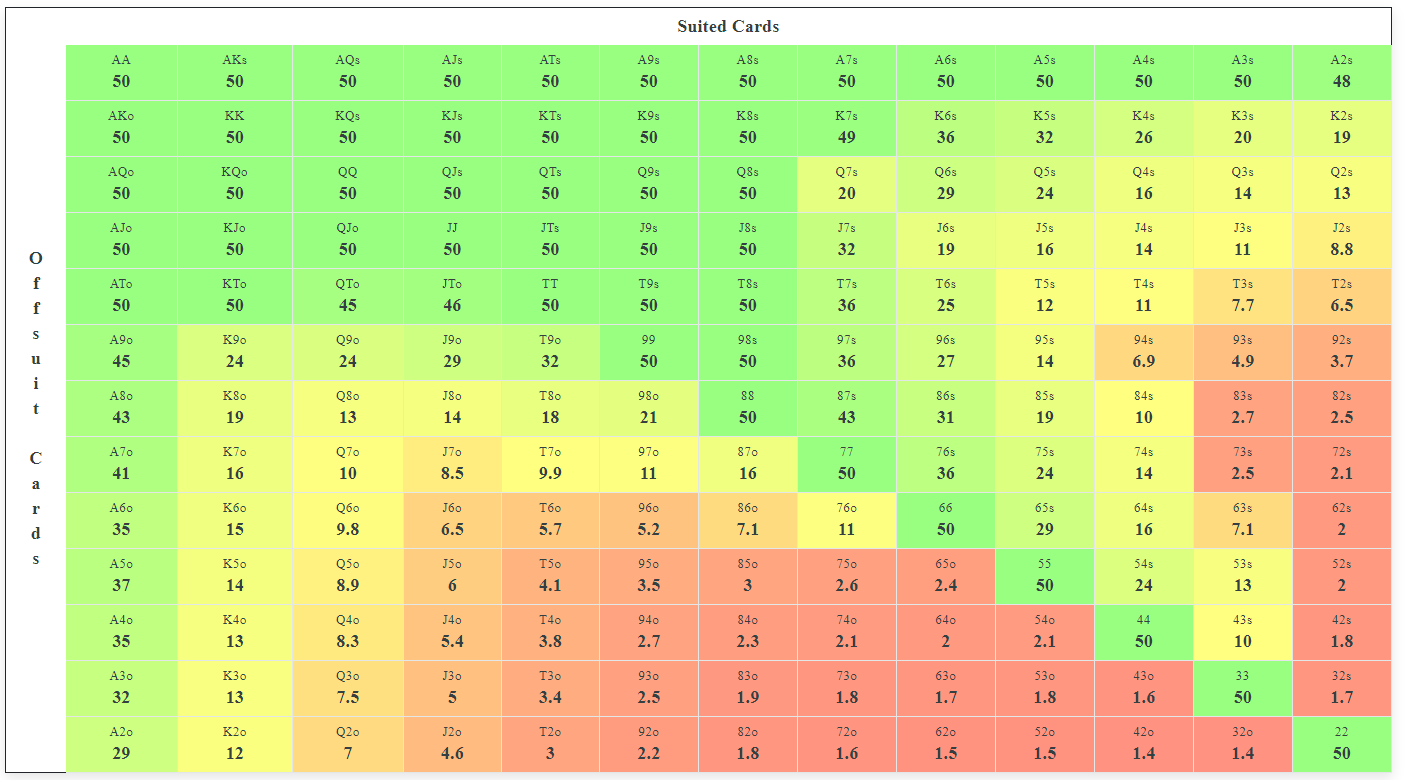Nash Equilibrium Poker
- Nash Equilibrium Poker
- Nash Equilibrium Example Poker
- Nash Equilibrium Examples
- Nash Equilibrium Poker Chart
- Nash Equilibrium Poker Cheat Cheat
- Nash Equilibrium Poker Calculator
Most of you have probably heard something about game theory, a topic some poker players have gotten curious about and studied. If you're one of those players, you might also have heard of 'Nash equilibrium,' which is a concept that comes out of game theory.
'Nash equilibrum' is named after a mathematician named John Forbes Nash, Jr. who came up with the idea during the middle of the 20th century. Here is a definition:
'If each player has chosen a strategy and no player can benefit by changing strategies while the other players keep theirs unchanged, then the current set of strategy choices and the corresponding payoffs constitute a Nash equilibrium.'
Nash proved that if we allow mixed strategies, then every game with a finite number of players in which each player can choose from finitely many pure strategies has at least one Nash equilibrium. Do you follow? That means within any game if there are a finite number of strategies available, there's at least one combination where the strategies chosen will create a Nash equilibrium.
The #1 poker odds trainer for preflop GTO Nash Equilibrium based decisions. The #1 poker odds trainer for preflop GTO Nash Equilibrium based decisions. Never make a bad shove again! Available on both Android and iPhone/iPad Preflop+ is the only GTO poker. HeadsUp Push/Fold Nash Equilibrium The charts below show the Nash Equilibrium strategies for two player push-or-fold NLHE. This is a simplified game where the SB is only allowed to go all-in or fold, and the BB can either call or fold when facing a shove.
Nash Equilibrium Poker
If you think about it, that means that every poker situation and poker in general has its own Nash equilibrium. In theory, if everyone plays perfectly, even no-limit hold'em is a solved game.
Should we start panicking? No, not yet.
First of all, there is a huge difference between knowing there is a Nash equilibrium and finding one. Right now we are able to find Nash equilibriums only in the easiest spots in NLHE -- say in a heads-up 'pushbot' (all in or fold) game, or when looking specifically at our river bet-call strategy. But it's getting too complicated if we try to do it in a harder spot -- indeed, in most spots.
Let's look at a small example.
We are playing three-handed, and only two players make the money. The blinds are 120/240. One player has 3,000 chips, we have 2,000, and a third player has just one chip.
Nash Equilibrium Example Poker
The guy with one chip is on the button and he folds. We are in the small blind. Nash equilibrium here would be to push ~13% for us and the big blind to call ~7.5%. Ranges are that tight, because you don't want to bust out before the one-chip guy. But let's say guy in the big blind is a huge fish who would call us with [7][6]-suited and hands like that. That move is very unprofitable for him, but it's also very unprofitable for us -- to the point where our push becomes very, very negative EV.
The winner in this situation? That guy with one chip who folded. He is getting tons of value despite having just one chip and folding first to act.
As this example shows, using the range from Nash equilibrium does not guarantee you profit or even to break even. That's the most widespread misconception about 'GTO' or game theory optimal play -- that there exists an 'ideal' strategy that guarantees you at least breaking even, no matter how your opponents play. As we've seen that's not the case, because Nash equilibrium only works if everyone is playing perfectly. In fact, if someone is not playing perfectly and making mistakes, that can affect you in a negative way.

Nash Equilibrium Examples
So don't worry... :) Poker will always be the game we love, a game where you constantly have to adapt to what others do. A game in which no 'secret math strategy that beats everything' exists.
Ivan Demidov is a member of Team PokerStars Pro
Nash Equilibrium Poker Chart
Jennifear's charts and their use
Nash equilibrium applied to poker should therefore allow a player never to lose, whatever the opponent’s strategy. Consequently, there are no regrets to be had in case of defeat since one played in the best possible manner; the one that ensures long-term profit. In effect, being a game with incomplete information and many decision factors to be considered, poker is not just a form of mathematical resolution. However, some assumptions based on Nash equilibrium can help simplify the game and thus make it mathematically resolvable. The concrete application of this mathematical resolution are Jennifear's charts used in our push or fold Calculator Tool. If poker is simplified to push or fold actions, then decisions become calculable.
Nash Equilibrium Poker Cheat Cheat
How the tool works
Nash Equilibrium Poker Calculator
Before using our tool, you need to know several factors. In addition to your cards’ value and suit type, carefully note your position (am I in early or middle position or in a battle of the blinds?), the amount of the ante compared to that of the blinds or even your total number of big blinds. As a matter of course, the calculator only takes into account push (betting all-in) or fold (discarding your hand and forfeiting interest in the current pot) full ring situations with 20 blinds or less (not just simple raises) for purposes of game simplification and automation. Thanks to this mathematical resolution, your long-term gain expectations can only be positive.